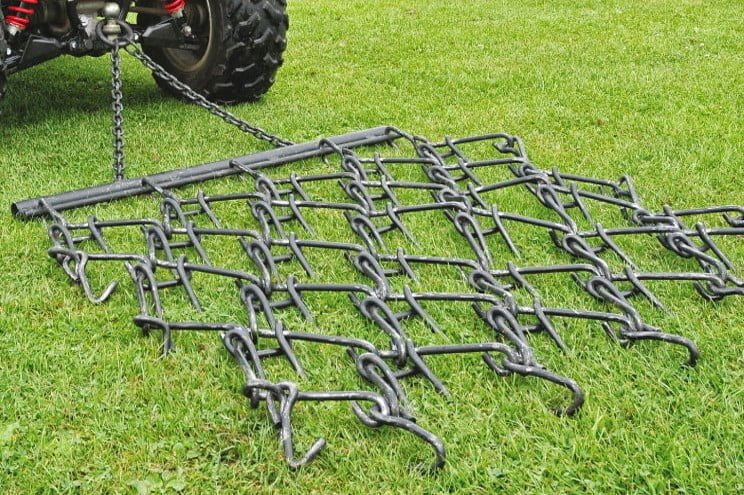It’s not really a question of whether you should harrow or not. It’s more about what you should harrow and when you should harrow. As now is one of those times to harrow, here we share why you should be getting out in the fields this month!
Why Harrow?
Harrowing is beneficial for a couple of reasons. Firstly it aids drainage, thereby helping to minimise muddy patches and standing water. Secondly, it promotes new grass growth by removing the old thatch and giving new shoots the room and oxygen they need to thrive. It also levels molehills and clods, helps spread manure, and makes it easier to mow throughout the summer months.
In spring, it’s an effective way to prepare your paddocks and pastures for the rest of the year, and provide good grazing for livestock. We would also recommend that you harrow in the autumn months too, to aid germination of grass and flower seed over winter. However, for best results harrowing can continue from spring to late autumn; and as it’s very easy to hitch up a chain harrow to a quad bike, 4×4 or compact tractor, there’s no excuse for not improving your grassland.
Here’s a quick reminder of why you should be doing it:
- Scarifies and aerates the soil
- Breaks up clods and levels heavy soil
- Stimulates new growth by aerating and removing thatch
- Spreads and works in manure or other fertilisers
- Rips out moss
- Levels molehills
- Improves drainage
- Works compressed soil
- Helps to rake in seeds
Advice For Harrowing
Chain harrows are inexpensive farm implements that provide an environmentally friendly way of improving grazing or grassland. It is also one of the first paddock and pasture maintenance jobs you can do in the spring, even when it’s still damp. Typically, mid-March onwards is the ideal time to start regular harrowing. However, if you plan to use a tractor to pull the harrow you may need to wait until it’s dried out a bit more to avoid creating a mudbath! If you’re using a quad bike you may be able to get on with this job a little earlier.
If you’re in the market for a harrow consider whether to opt for a drag harrow or framed harrow. Drag harrows are a little bit cheaper and can be towed behind any vehicle with a pin or ball hitch. Whereas framed harrows are still relatively inexpensive but need to be hitched to a compact tractor with a 3-point linkage. The main advantage of a framed harrow is that they can be lifted whilst attached, so they can be easily transported around your land or on the road.
We would also recommend that you look at 3 way harrows (both drag and framed). These allow you to position the tines of the harrow for each job. For example, face the tines forward ‘aggressive harrowing’ for deeper penetration or harder ground; face them backwards for ‘passive harrowing’; or face them upside down for smooth harrowing (ideal for seed beds and levelling equestrian areas).
Should You Rock And Roll As Well?
Harrowing and rolling tend to go hand-in-hand. Ideally you want to remove the thatch and aerate the soil by harrowing, followed by rolling if you are reseeding the land or want a good finish (for example on a sports field).
However, rolling in wet conditions will compact soil and potentially undo the benefits of harrowing. So if the ground is still a little wet, by all means get out a start harrowing now with a light vehicle such as a quad bike, but leave rolling until the soil has dried out a bit more.
Need further advice? Our team are on hand to discuss jobs like harrowing and rolling and what are the best options for you. Get in touch by calling 01420 520 510 or emailing sales@farmtechsupplies.co.uk








